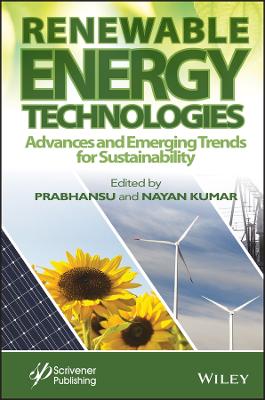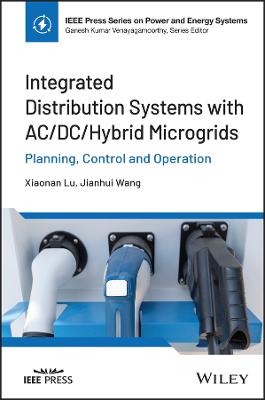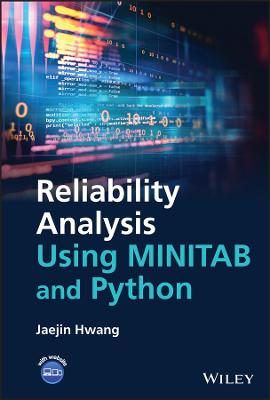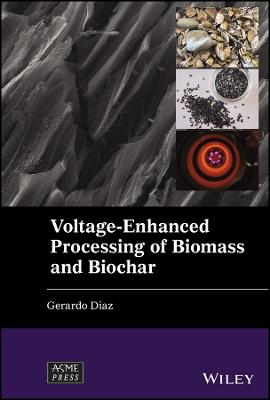Renewable Energy Technologies
 -15%
portes grátis
-15%
portes grátis
Renewable Energy Technologies
Advances and Emerging Trends for Sustainability
Kumar, Nayan; Prabhansu, Prabhansu
John Wiley & Sons Inc
11/2022
672
Dura
Inglês
9781119827504
15 a 20 dias
666
Descrição não disponível.
Preface
1. Comparison of Drag Models for Hydrodynamic Flow Behavior Analysis of Bubbling Fluidized Bed
Sourav Ganguli, Prabhansu and Malay Kr. Karmakar
1.1 Introduction
1.2 Mathematical Model
1.3 Results and Discussion
1.4 Conclusion 18 References
2. Pathways of Renewable Energy Sources in Rajasthan for Sustainable Growth
Hemani Paliwal, Vikramaditya Dave and Sujeet Kumar
2.1 Introduction
2.2 Renewable Energy in India
2.3 Renewable Energy in Rajasthan
2.4 Government Initiatives
2.5 Major Achievements
2.6 Environment Effects
2.7 Conclusion
3. Distributed Generation Policy in India: Challenges and Opportunities
J. N. Roy, Uday Shankar and Ajaykumar Chaurasiya
3.1 Background
3.2 Electricity Access in India
3.3 DG System Position in Existing Legal and Policy Framework of India
3.4 Analysis and Challenges in the DG System
3.5 Conclusion
4. Sustainable Development of Nanomaterials for Energy and Environmental Protection Applications
Mohamed Jaffer Sadiq Mohamed
4.1 Introduction
4.2 Photocatalysis
4.3 Electrocatalysis
4.4 Supercapacitors
4.5 Conclusions
5. Semiconductor Quantum Dot Solar Cells: Construction, Working Principle, and Current Development
Hirendra Das and Pranayee Datta
5.1 Introduction
5.2 Solar Cell Operation (Photovoltaic Effect)
5.3 Quantum Dot Based Solar Cells
5.4 Materials for QDSSCs
5.5 Conclusion and Future Prospects
6. Review on Productivity Enhancement of Passive Solar Stills
Subbarama Kousik Suraparaju and Sendhil Kumar Natarajan
6.1 Introduction
6.2 Need for Desalination in India & Other Parts of World
6.3 Significance of Solar Energy -- Indian Scenario
6.4 Desalination Process Powered by Solar Energy
6.5 Solar Still
6.6 Methods to Augment the Potable Water Yield in Passive Solar Still
6.7 Factors Affecting the Rate of Productivity
6.8 Corollary on Productivity Enhancement Methods
6.9 Conclusions and Future Recommendations
7. Subsynchronous Resonance Issues in Integrating Large Windfarms to Grid
R. Mahalakshmi and K.C. Sindhu Thampatty
7.1 Introduction
7.2 Literature Survey
7.3 DFIG Based Grid Integrated WECs
7.4 Modeling of System Components
7.5 Analysis of Subsynchronous Resonance
7.6 Hardware Implementation
7.7 Conclusion
8. Emerging Trends for Biomass and Waste to Energy Conversion
Musademba Downmore, Chihobo Chido H. and Garahwa Zvikomborero
8.1 Introduction
8.2 Hydrothermal Processing
8.3 Opportunities and Challenges in Hydrothermal Processing (HTP)
8.4 Bio-Methanation Process
8.5 Integrating AD-HTP
8.6 Waste to Energy Conversion
8.7 Impacts of COVID-19 on Biomass and Waste to Energy Conversion
8.8 Conclusion
9. Renewable Energy Policies and Standards for Energy Storage and Electric Vehicles in India
Prateek Srivastava, Shashank Vyas and Nilesh B. Hadiya
9.1 Introduction
9.2 Structure of the Indian Power System
9.3 Status of RE in India
9.4 Legal Aspects of Electricity and Consumer Rights in India
9.5 Policies, Programs, and Standards Related to Energy Storage and EVs
9.6 Electricity Market-Related Developments for Accommodating More RE
9.7 Conclusion
10. Durable Catalyst Support for PEFC Application
P. Dhanasekaran, S. Vinod Selvaganesh and Santoshkumar D. Bhat
10.1 Introduction
10.2 Classification of Fuel Cells and Operating Principle
10.3 Direct Methanol Fuel Cells (DMFC)
10.4 Fuel Cell Performance and Stability
10.5 Effect of TiO2 Based Catalysts/Supports for H2-PEFC and DMFC
10.6 Variable Phase of TiO2 Supported Pt Towards Fuel Cell Application
10.7 Influence of Doping in TiO2 Towards ORR
10.8 Influence of Morphology Towards Oxygen Reduction Reaction
10.9 Effect of Titania-Carbon Composite Supported Pt Electrocatalyst for PEFC
10.10 PEFC Stack Operation and Durability Studies with Alternate Catalyst Support
10.11 Summary and Way Forward
11. Unitized Regenerative Fuel Cells: Future of Renewable Energy Research
Devi Renuka K., Santoshkumar D. Bhat and Sreekuttan M. Unni
11.1 Introduction
11.2 Principle of URFC
11.3 Classification of URFCs
11.4 Case Studies on URFCs
11.5 Conclusion
12. Energy Storage for Distributed Energy Resources
Udaya Bhasker Manthati, Srinivas Punna and Arunkumar C. R.
12.1 Introduction
12.2 Types of Energy Storage Systems
12.3 Power Electronic Interface
12.4 Control of Different HESS Configurations
12.5 Battery Modeling Techniques
12.6 Applications
12.7 Challenges and Future of ESSs
12.8 Conclusions
13. Comprehensive Analysis on DC-Microgrid Application for Remote Electrification
Yugal Kishor, C.H. Kamesh Rao and R.N. Patel
13.1 Introduction
13.2 Background of DC-muG
13.3 DC-?G Architectures
13.4 DC-?G Voltage Polarity
13.5 Single Bus DC-?G
13.6 Radial Architecture of DC-?G
13.7 Ladder Type DC-?G
13.8 Topological Overview of DC-DC Converters
13.9 DC-?G Control Schemes
13.10 Key Challenges and Direction of Future Research
13.11 Conclusions
14. Thermo-Hydraulic Performance of Solar Air Heater
Tabish Alam and Karmveer
14.1 Introduction
14.2 Solar Air Heater (SAH)
14.3 Performance Evaluation of a SAH
14.4 Collector Performance Testing and Prediction
14.5 Performance Enhancement Methods of Solar Air Collector
14.6 Thermo-Hydraulic Performance
14.7 Prediction of Net Effective Efficiency of Conical Protrusion Ribs on Absorber of SAH: A Case Study
14.8 Conclusions
15. Artificial Intelligent Approaches for Load Frequency Control in Isolated Microgrid with Renewable Energy Sources
S. Anbarasi, K. Punitha, S. Krishnaveni and R. Aruna
15.1 Introduction
15.2 Microgrid Integrated with Renewable Energy Resources
15.3 Control Strategy for LFC in Micro Grid
15.4 Simulation Results and Discussions: Case Study
15.5 Summary and Future Scope
16. Analysis of Brushless Doubly Fed Induction Machine
Resmi R.
16.1 Introduction
16.2 A Study on BDFIM
16.3 FEM Analysis of BDFIM Performance
16.4 Fabrication of BDFIM
16.5 Testing of Prototype BDFIM as Motor
16.6 Testing of BDFIM as a Generator
16.7 Conclusion
17. SMC Augmented Droop Control Scheme for Improved Small Signal Stability of Inverter Dominated Microgrid
Binu Krishnan U. and Mija S. J.
17.1 Introduction
17.2 Small Signal Model of Droop Controlled MG System
17.3 Droop Controller with SMC
17.4 Conclusion
18. Energy Scenarios Due to Southern Pine Beetle Outbreak in Honduras
Juan F. Reyez-Meza, Juan G. Elvir-Hernandez, Wilfredo C. Flores, Harold R. Chamorro, Jacobo Aguillon-Garcia, Vijay K. Sood, Kyri Baker, Ameena Al-Sumaiti, Francisco Gonzalez-Longatt and Wilmar Martinez
18.1 Introduction
18.2 SPB (Southern Pine Beetle)
18.3 Implementation of Methodology
18.4 Scenario Taking Into Consideration the Energy Demand
Conclusions
References
Appendix
Index
1. Comparison of Drag Models for Hydrodynamic Flow Behavior Analysis of Bubbling Fluidized Bed
Sourav Ganguli, Prabhansu and Malay Kr. Karmakar
1.1 Introduction
1.2 Mathematical Model
1.3 Results and Discussion
1.4 Conclusion 18 References
2. Pathways of Renewable Energy Sources in Rajasthan for Sustainable Growth
Hemani Paliwal, Vikramaditya Dave and Sujeet Kumar
2.1 Introduction
2.2 Renewable Energy in India
2.3 Renewable Energy in Rajasthan
2.4 Government Initiatives
2.5 Major Achievements
2.6 Environment Effects
2.7 Conclusion
3. Distributed Generation Policy in India: Challenges and Opportunities
J. N. Roy, Uday Shankar and Ajaykumar Chaurasiya
3.1 Background
3.2 Electricity Access in India
3.3 DG System Position in Existing Legal and Policy Framework of India
3.4 Analysis and Challenges in the DG System
3.5 Conclusion
4. Sustainable Development of Nanomaterials for Energy and Environmental Protection Applications
Mohamed Jaffer Sadiq Mohamed
4.1 Introduction
4.2 Photocatalysis
4.3 Electrocatalysis
4.4 Supercapacitors
4.5 Conclusions
5. Semiconductor Quantum Dot Solar Cells: Construction, Working Principle, and Current Development
Hirendra Das and Pranayee Datta
5.1 Introduction
5.2 Solar Cell Operation (Photovoltaic Effect)
5.3 Quantum Dot Based Solar Cells
5.4 Materials for QDSSCs
5.5 Conclusion and Future Prospects
6. Review on Productivity Enhancement of Passive Solar Stills
Subbarama Kousik Suraparaju and Sendhil Kumar Natarajan
6.1 Introduction
6.2 Need for Desalination in India & Other Parts of World
6.3 Significance of Solar Energy -- Indian Scenario
6.4 Desalination Process Powered by Solar Energy
6.5 Solar Still
6.6 Methods to Augment the Potable Water Yield in Passive Solar Still
6.7 Factors Affecting the Rate of Productivity
6.8 Corollary on Productivity Enhancement Methods
6.9 Conclusions and Future Recommendations
7. Subsynchronous Resonance Issues in Integrating Large Windfarms to Grid
R. Mahalakshmi and K.C. Sindhu Thampatty
7.1 Introduction
7.2 Literature Survey
7.3 DFIG Based Grid Integrated WECs
7.4 Modeling of System Components
7.5 Analysis of Subsynchronous Resonance
7.6 Hardware Implementation
7.7 Conclusion
8. Emerging Trends for Biomass and Waste to Energy Conversion
Musademba Downmore, Chihobo Chido H. and Garahwa Zvikomborero
8.1 Introduction
8.2 Hydrothermal Processing
8.3 Opportunities and Challenges in Hydrothermal Processing (HTP)
8.4 Bio-Methanation Process
8.5 Integrating AD-HTP
8.6 Waste to Energy Conversion
8.7 Impacts of COVID-19 on Biomass and Waste to Energy Conversion
8.8 Conclusion
9. Renewable Energy Policies and Standards for Energy Storage and Electric Vehicles in India
Prateek Srivastava, Shashank Vyas and Nilesh B. Hadiya
9.1 Introduction
9.2 Structure of the Indian Power System
9.3 Status of RE in India
9.4 Legal Aspects of Electricity and Consumer Rights in India
9.5 Policies, Programs, and Standards Related to Energy Storage and EVs
9.6 Electricity Market-Related Developments for Accommodating More RE
9.7 Conclusion
10. Durable Catalyst Support for PEFC Application
P. Dhanasekaran, S. Vinod Selvaganesh and Santoshkumar D. Bhat
10.1 Introduction
10.2 Classification of Fuel Cells and Operating Principle
10.3 Direct Methanol Fuel Cells (DMFC)
10.4 Fuel Cell Performance and Stability
10.5 Effect of TiO2 Based Catalysts/Supports for H2-PEFC and DMFC
10.6 Variable Phase of TiO2 Supported Pt Towards Fuel Cell Application
10.7 Influence of Doping in TiO2 Towards ORR
10.8 Influence of Morphology Towards Oxygen Reduction Reaction
10.9 Effect of Titania-Carbon Composite Supported Pt Electrocatalyst for PEFC
10.10 PEFC Stack Operation and Durability Studies with Alternate Catalyst Support
10.11 Summary and Way Forward
11. Unitized Regenerative Fuel Cells: Future of Renewable Energy Research
Devi Renuka K., Santoshkumar D. Bhat and Sreekuttan M. Unni
11.1 Introduction
11.2 Principle of URFC
11.3 Classification of URFCs
11.4 Case Studies on URFCs
11.5 Conclusion
12. Energy Storage for Distributed Energy Resources
Udaya Bhasker Manthati, Srinivas Punna and Arunkumar C. R.
12.1 Introduction
12.2 Types of Energy Storage Systems
12.3 Power Electronic Interface
12.4 Control of Different HESS Configurations
12.5 Battery Modeling Techniques
12.6 Applications
12.7 Challenges and Future of ESSs
12.8 Conclusions
13. Comprehensive Analysis on DC-Microgrid Application for Remote Electrification
Yugal Kishor, C.H. Kamesh Rao and R.N. Patel
13.1 Introduction
13.2 Background of DC-muG
13.3 DC-?G Architectures
13.4 DC-?G Voltage Polarity
13.5 Single Bus DC-?G
13.6 Radial Architecture of DC-?G
13.7 Ladder Type DC-?G
13.8 Topological Overview of DC-DC Converters
13.9 DC-?G Control Schemes
13.10 Key Challenges and Direction of Future Research
13.11 Conclusions
14. Thermo-Hydraulic Performance of Solar Air Heater
Tabish Alam and Karmveer
14.1 Introduction
14.2 Solar Air Heater (SAH)
14.3 Performance Evaluation of a SAH
14.4 Collector Performance Testing and Prediction
14.5 Performance Enhancement Methods of Solar Air Collector
14.6 Thermo-Hydraulic Performance
14.7 Prediction of Net Effective Efficiency of Conical Protrusion Ribs on Absorber of SAH: A Case Study
14.8 Conclusions
15. Artificial Intelligent Approaches for Load Frequency Control in Isolated Microgrid with Renewable Energy Sources
S. Anbarasi, K. Punitha, S. Krishnaveni and R. Aruna
15.1 Introduction
15.2 Microgrid Integrated with Renewable Energy Resources
15.3 Control Strategy for LFC in Micro Grid
15.4 Simulation Results and Discussions: Case Study
15.5 Summary and Future Scope
16. Analysis of Brushless Doubly Fed Induction Machine
Resmi R.
16.1 Introduction
16.2 A Study on BDFIM
16.3 FEM Analysis of BDFIM Performance
16.4 Fabrication of BDFIM
16.5 Testing of Prototype BDFIM as Motor
16.6 Testing of BDFIM as a Generator
16.7 Conclusion
17. SMC Augmented Droop Control Scheme for Improved Small Signal Stability of Inverter Dominated Microgrid
Binu Krishnan U. and Mija S. J.
17.1 Introduction
17.2 Small Signal Model of Droop Controlled MG System
17.3 Droop Controller with SMC
17.4 Conclusion
18. Energy Scenarios Due to Southern Pine Beetle Outbreak in Honduras
Juan F. Reyez-Meza, Juan G. Elvir-Hernandez, Wilfredo C. Flores, Harold R. Chamorro, Jacobo Aguillon-Garcia, Vijay K. Sood, Kyri Baker, Ameena Al-Sumaiti, Francisco Gonzalez-Longatt and Wilmar Martinez
18.1 Introduction
18.2 SPB (Southern Pine Beetle)
18.3 Implementation of Methodology
18.4 Scenario Taking Into Consideration the Energy Demand
Conclusions
References
Appendix
Index
Este título pertence ao(s) assunto(s) indicados(s). Para ver outros títulos clique no assunto desejado.
<p>Challenges and Opportunities for Sustainable Development of Green Energy Systems;Green energy resources: case studies;Next Generation Solid State Power Electronics Device and Converter Topology (DC-DC or DC-AC);Energy systems development and its management ;Energy Policies & Standards;Sustainable Energy Development; Sustainable Energy Power Generation and Distribution; Emerging Sustainable Energy System ; Solar Energy Conversion System; Sustainable manufacturing and development of renewable energy materials; Fuel cell utilization for Energy Storage; Modelling and Performance Analysis; Integrated Energy System; Smart cities applications for smart buildings and smart street lighting; Energy storage and distributed energy resources; Rural and Isolated Areas Development through Green Energy; Soft Computing Techniques in Energy System; Hybrid renewable energy system; Green Energy and Grid Modernization Solutions; Microgrid & Smartgrid novel Technologies and Issues; Power Quality & Electro Magnetic Interference Issues for GE; Traditional and modern Control Techniques and Intelligent Systems; Other renewable energy resource utilization and sustainable growth related topics; Green Energy</p>
Preface
1. Comparison of Drag Models for Hydrodynamic Flow Behavior Analysis of Bubbling Fluidized Bed
Sourav Ganguli, Prabhansu and Malay Kr. Karmakar
1.1 Introduction
1.2 Mathematical Model
1.3 Results and Discussion
1.4 Conclusion 18 References
2. Pathways of Renewable Energy Sources in Rajasthan for Sustainable Growth
Hemani Paliwal, Vikramaditya Dave and Sujeet Kumar
2.1 Introduction
2.2 Renewable Energy in India
2.3 Renewable Energy in Rajasthan
2.4 Government Initiatives
2.5 Major Achievements
2.6 Environment Effects
2.7 Conclusion
3. Distributed Generation Policy in India: Challenges and Opportunities
J. N. Roy, Uday Shankar and Ajaykumar Chaurasiya
3.1 Background
3.2 Electricity Access in India
3.3 DG System Position in Existing Legal and Policy Framework of India
3.4 Analysis and Challenges in the DG System
3.5 Conclusion
4. Sustainable Development of Nanomaterials for Energy and Environmental Protection Applications
Mohamed Jaffer Sadiq Mohamed
4.1 Introduction
4.2 Photocatalysis
4.3 Electrocatalysis
4.4 Supercapacitors
4.5 Conclusions
5. Semiconductor Quantum Dot Solar Cells: Construction, Working Principle, and Current Development
Hirendra Das and Pranayee Datta
5.1 Introduction
5.2 Solar Cell Operation (Photovoltaic Effect)
5.3 Quantum Dot Based Solar Cells
5.4 Materials for QDSSCs
5.5 Conclusion and Future Prospects
6. Review on Productivity Enhancement of Passive Solar Stills
Subbarama Kousik Suraparaju and Sendhil Kumar Natarajan
6.1 Introduction
6.2 Need for Desalination in India & Other Parts of World
6.3 Significance of Solar Energy -- Indian Scenario
6.4 Desalination Process Powered by Solar Energy
6.5 Solar Still
6.6 Methods to Augment the Potable Water Yield in Passive Solar Still
6.7 Factors Affecting the Rate of Productivity
6.8 Corollary on Productivity Enhancement Methods
6.9 Conclusions and Future Recommendations
7. Subsynchronous Resonance Issues in Integrating Large Windfarms to Grid
R. Mahalakshmi and K.C. Sindhu Thampatty
7.1 Introduction
7.2 Literature Survey
7.3 DFIG Based Grid Integrated WECs
7.4 Modeling of System Components
7.5 Analysis of Subsynchronous Resonance
7.6 Hardware Implementation
7.7 Conclusion
8. Emerging Trends for Biomass and Waste to Energy Conversion
Musademba Downmore, Chihobo Chido H. and Garahwa Zvikomborero
8.1 Introduction
8.2 Hydrothermal Processing
8.3 Opportunities and Challenges in Hydrothermal Processing (HTP)
8.4 Bio-Methanation Process
8.5 Integrating AD-HTP
8.6 Waste to Energy Conversion
8.7 Impacts of COVID-19 on Biomass and Waste to Energy Conversion
8.8 Conclusion
9. Renewable Energy Policies and Standards for Energy Storage and Electric Vehicles in India
Prateek Srivastava, Shashank Vyas and Nilesh B. Hadiya
9.1 Introduction
9.2 Structure of the Indian Power System
9.3 Status of RE in India
9.4 Legal Aspects of Electricity and Consumer Rights in India
9.5 Policies, Programs, and Standards Related to Energy Storage and EVs
9.6 Electricity Market-Related Developments for Accommodating More RE
9.7 Conclusion
10. Durable Catalyst Support for PEFC Application
P. Dhanasekaran, S. Vinod Selvaganesh and Santoshkumar D. Bhat
10.1 Introduction
10.2 Classification of Fuel Cells and Operating Principle
10.3 Direct Methanol Fuel Cells (DMFC)
10.4 Fuel Cell Performance and Stability
10.5 Effect of TiO2 Based Catalysts/Supports for H2-PEFC and DMFC
10.6 Variable Phase of TiO2 Supported Pt Towards Fuel Cell Application
10.7 Influence of Doping in TiO2 Towards ORR
10.8 Influence of Morphology Towards Oxygen Reduction Reaction
10.9 Effect of Titania-Carbon Composite Supported Pt Electrocatalyst for PEFC
10.10 PEFC Stack Operation and Durability Studies with Alternate Catalyst Support
10.11 Summary and Way Forward
11. Unitized Regenerative Fuel Cells: Future of Renewable Energy Research
Devi Renuka K., Santoshkumar D. Bhat and Sreekuttan M. Unni
11.1 Introduction
11.2 Principle of URFC
11.3 Classification of URFCs
11.4 Case Studies on URFCs
11.5 Conclusion
12. Energy Storage for Distributed Energy Resources
Udaya Bhasker Manthati, Srinivas Punna and Arunkumar C. R.
12.1 Introduction
12.2 Types of Energy Storage Systems
12.3 Power Electronic Interface
12.4 Control of Different HESS Configurations
12.5 Battery Modeling Techniques
12.6 Applications
12.7 Challenges and Future of ESSs
12.8 Conclusions
13. Comprehensive Analysis on DC-Microgrid Application for Remote Electrification
Yugal Kishor, C.H. Kamesh Rao and R.N. Patel
13.1 Introduction
13.2 Background of DC-muG
13.3 DC-?G Architectures
13.4 DC-?G Voltage Polarity
13.5 Single Bus DC-?G
13.6 Radial Architecture of DC-?G
13.7 Ladder Type DC-?G
13.8 Topological Overview of DC-DC Converters
13.9 DC-?G Control Schemes
13.10 Key Challenges and Direction of Future Research
13.11 Conclusions
14. Thermo-Hydraulic Performance of Solar Air Heater
Tabish Alam and Karmveer
14.1 Introduction
14.2 Solar Air Heater (SAH)
14.3 Performance Evaluation of a SAH
14.4 Collector Performance Testing and Prediction
14.5 Performance Enhancement Methods of Solar Air Collector
14.6 Thermo-Hydraulic Performance
14.7 Prediction of Net Effective Efficiency of Conical Protrusion Ribs on Absorber of SAH: A Case Study
14.8 Conclusions
15. Artificial Intelligent Approaches for Load Frequency Control in Isolated Microgrid with Renewable Energy Sources
S. Anbarasi, K. Punitha, S. Krishnaveni and R. Aruna
15.1 Introduction
15.2 Microgrid Integrated with Renewable Energy Resources
15.3 Control Strategy for LFC in Micro Grid
15.4 Simulation Results and Discussions: Case Study
15.5 Summary and Future Scope
16. Analysis of Brushless Doubly Fed Induction Machine
Resmi R.
16.1 Introduction
16.2 A Study on BDFIM
16.3 FEM Analysis of BDFIM Performance
16.4 Fabrication of BDFIM
16.5 Testing of Prototype BDFIM as Motor
16.6 Testing of BDFIM as a Generator
16.7 Conclusion
17. SMC Augmented Droop Control Scheme for Improved Small Signal Stability of Inverter Dominated Microgrid
Binu Krishnan U. and Mija S. J.
17.1 Introduction
17.2 Small Signal Model of Droop Controlled MG System
17.3 Droop Controller with SMC
17.4 Conclusion
18. Energy Scenarios Due to Southern Pine Beetle Outbreak in Honduras
Juan F. Reyez-Meza, Juan G. Elvir-Hernandez, Wilfredo C. Flores, Harold R. Chamorro, Jacobo Aguillon-Garcia, Vijay K. Sood, Kyri Baker, Ameena Al-Sumaiti, Francisco Gonzalez-Longatt and Wilmar Martinez
18.1 Introduction
18.2 SPB (Southern Pine Beetle)
18.3 Implementation of Methodology
18.4 Scenario Taking Into Consideration the Energy Demand
Conclusions
References
Appendix
Index
1. Comparison of Drag Models for Hydrodynamic Flow Behavior Analysis of Bubbling Fluidized Bed
Sourav Ganguli, Prabhansu and Malay Kr. Karmakar
1.1 Introduction
1.2 Mathematical Model
1.3 Results and Discussion
1.4 Conclusion 18 References
2. Pathways of Renewable Energy Sources in Rajasthan for Sustainable Growth
Hemani Paliwal, Vikramaditya Dave and Sujeet Kumar
2.1 Introduction
2.2 Renewable Energy in India
2.3 Renewable Energy in Rajasthan
2.4 Government Initiatives
2.5 Major Achievements
2.6 Environment Effects
2.7 Conclusion
3. Distributed Generation Policy in India: Challenges and Opportunities
J. N. Roy, Uday Shankar and Ajaykumar Chaurasiya
3.1 Background
3.2 Electricity Access in India
3.3 DG System Position in Existing Legal and Policy Framework of India
3.4 Analysis and Challenges in the DG System
3.5 Conclusion
4. Sustainable Development of Nanomaterials for Energy and Environmental Protection Applications
Mohamed Jaffer Sadiq Mohamed
4.1 Introduction
4.2 Photocatalysis
4.3 Electrocatalysis
4.4 Supercapacitors
4.5 Conclusions
5. Semiconductor Quantum Dot Solar Cells: Construction, Working Principle, and Current Development
Hirendra Das and Pranayee Datta
5.1 Introduction
5.2 Solar Cell Operation (Photovoltaic Effect)
5.3 Quantum Dot Based Solar Cells
5.4 Materials for QDSSCs
5.5 Conclusion and Future Prospects
6. Review on Productivity Enhancement of Passive Solar Stills
Subbarama Kousik Suraparaju and Sendhil Kumar Natarajan
6.1 Introduction
6.2 Need for Desalination in India & Other Parts of World
6.3 Significance of Solar Energy -- Indian Scenario
6.4 Desalination Process Powered by Solar Energy
6.5 Solar Still
6.6 Methods to Augment the Potable Water Yield in Passive Solar Still
6.7 Factors Affecting the Rate of Productivity
6.8 Corollary on Productivity Enhancement Methods
6.9 Conclusions and Future Recommendations
7. Subsynchronous Resonance Issues in Integrating Large Windfarms to Grid
R. Mahalakshmi and K.C. Sindhu Thampatty
7.1 Introduction
7.2 Literature Survey
7.3 DFIG Based Grid Integrated WECs
7.4 Modeling of System Components
7.5 Analysis of Subsynchronous Resonance
7.6 Hardware Implementation
7.7 Conclusion
8. Emerging Trends for Biomass and Waste to Energy Conversion
Musademba Downmore, Chihobo Chido H. and Garahwa Zvikomborero
8.1 Introduction
8.2 Hydrothermal Processing
8.3 Opportunities and Challenges in Hydrothermal Processing (HTP)
8.4 Bio-Methanation Process
8.5 Integrating AD-HTP
8.6 Waste to Energy Conversion
8.7 Impacts of COVID-19 on Biomass and Waste to Energy Conversion
8.8 Conclusion
9. Renewable Energy Policies and Standards for Energy Storage and Electric Vehicles in India
Prateek Srivastava, Shashank Vyas and Nilesh B. Hadiya
9.1 Introduction
9.2 Structure of the Indian Power System
9.3 Status of RE in India
9.4 Legal Aspects of Electricity and Consumer Rights in India
9.5 Policies, Programs, and Standards Related to Energy Storage and EVs
9.6 Electricity Market-Related Developments for Accommodating More RE
9.7 Conclusion
10. Durable Catalyst Support for PEFC Application
P. Dhanasekaran, S. Vinod Selvaganesh and Santoshkumar D. Bhat
10.1 Introduction
10.2 Classification of Fuel Cells and Operating Principle
10.3 Direct Methanol Fuel Cells (DMFC)
10.4 Fuel Cell Performance and Stability
10.5 Effect of TiO2 Based Catalysts/Supports for H2-PEFC and DMFC
10.6 Variable Phase of TiO2 Supported Pt Towards Fuel Cell Application
10.7 Influence of Doping in TiO2 Towards ORR
10.8 Influence of Morphology Towards Oxygen Reduction Reaction
10.9 Effect of Titania-Carbon Composite Supported Pt Electrocatalyst for PEFC
10.10 PEFC Stack Operation and Durability Studies with Alternate Catalyst Support
10.11 Summary and Way Forward
11. Unitized Regenerative Fuel Cells: Future of Renewable Energy Research
Devi Renuka K., Santoshkumar D. Bhat and Sreekuttan M. Unni
11.1 Introduction
11.2 Principle of URFC
11.3 Classification of URFCs
11.4 Case Studies on URFCs
11.5 Conclusion
12. Energy Storage for Distributed Energy Resources
Udaya Bhasker Manthati, Srinivas Punna and Arunkumar C. R.
12.1 Introduction
12.2 Types of Energy Storage Systems
12.3 Power Electronic Interface
12.4 Control of Different HESS Configurations
12.5 Battery Modeling Techniques
12.6 Applications
12.7 Challenges and Future of ESSs
12.8 Conclusions
13. Comprehensive Analysis on DC-Microgrid Application for Remote Electrification
Yugal Kishor, C.H. Kamesh Rao and R.N. Patel
13.1 Introduction
13.2 Background of DC-muG
13.3 DC-?G Architectures
13.4 DC-?G Voltage Polarity
13.5 Single Bus DC-?G
13.6 Radial Architecture of DC-?G
13.7 Ladder Type DC-?G
13.8 Topological Overview of DC-DC Converters
13.9 DC-?G Control Schemes
13.10 Key Challenges and Direction of Future Research
13.11 Conclusions
14. Thermo-Hydraulic Performance of Solar Air Heater
Tabish Alam and Karmveer
14.1 Introduction
14.2 Solar Air Heater (SAH)
14.3 Performance Evaluation of a SAH
14.4 Collector Performance Testing and Prediction
14.5 Performance Enhancement Methods of Solar Air Collector
14.6 Thermo-Hydraulic Performance
14.7 Prediction of Net Effective Efficiency of Conical Protrusion Ribs on Absorber of SAH: A Case Study
14.8 Conclusions
15. Artificial Intelligent Approaches for Load Frequency Control in Isolated Microgrid with Renewable Energy Sources
S. Anbarasi, K. Punitha, S. Krishnaveni and R. Aruna
15.1 Introduction
15.2 Microgrid Integrated with Renewable Energy Resources
15.3 Control Strategy for LFC in Micro Grid
15.4 Simulation Results and Discussions: Case Study
15.5 Summary and Future Scope
16. Analysis of Brushless Doubly Fed Induction Machine
Resmi R.
16.1 Introduction
16.2 A Study on BDFIM
16.3 FEM Analysis of BDFIM Performance
16.4 Fabrication of BDFIM
16.5 Testing of Prototype BDFIM as Motor
16.6 Testing of BDFIM as a Generator
16.7 Conclusion
17. SMC Augmented Droop Control Scheme for Improved Small Signal Stability of Inverter Dominated Microgrid
Binu Krishnan U. and Mija S. J.
17.1 Introduction
17.2 Small Signal Model of Droop Controlled MG System
17.3 Droop Controller with SMC
17.4 Conclusion
18. Energy Scenarios Due to Southern Pine Beetle Outbreak in Honduras
Juan F. Reyez-Meza, Juan G. Elvir-Hernandez, Wilfredo C. Flores, Harold R. Chamorro, Jacobo Aguillon-Garcia, Vijay K. Sood, Kyri Baker, Ameena Al-Sumaiti, Francisco Gonzalez-Longatt and Wilmar Martinez
18.1 Introduction
18.2 SPB (Southern Pine Beetle)
18.3 Implementation of Methodology
18.4 Scenario Taking Into Consideration the Energy Demand
Conclusions
References
Appendix
Index
Este título pertence ao(s) assunto(s) indicados(s). Para ver outros títulos clique no assunto desejado.
<p>Challenges and Opportunities for Sustainable Development of Green Energy Systems;Green energy resources: case studies;Next Generation Solid State Power Electronics Device and Converter Topology (DC-DC or DC-AC);Energy systems development and its management ;Energy Policies & Standards;Sustainable Energy Development; Sustainable Energy Power Generation and Distribution; Emerging Sustainable Energy System ; Solar Energy Conversion System; Sustainable manufacturing and development of renewable energy materials; Fuel cell utilization for Energy Storage; Modelling and Performance Analysis; Integrated Energy System; Smart cities applications for smart buildings and smart street lighting; Energy storage and distributed energy resources; Rural and Isolated Areas Development through Green Energy; Soft Computing Techniques in Energy System; Hybrid renewable energy system; Green Energy and Grid Modernization Solutions; Microgrid & Smartgrid novel Technologies and Issues; Power Quality & Electro Magnetic Interference Issues for GE; Traditional and modern Control Techniques and Intelligent Systems; Other renewable energy resource utilization and sustainable growth related topics; Green Energy</p>







